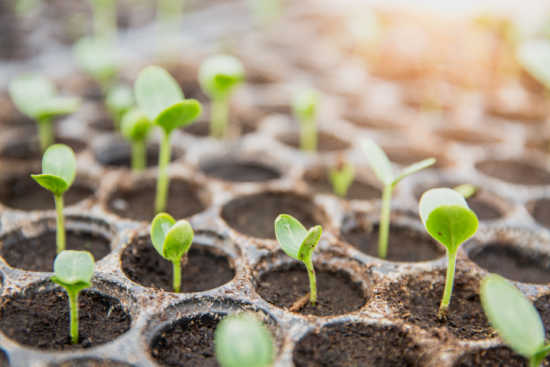“Seeds are the forgotten heroes of food—and of life itself” —Christopher Cook
If you are not saving your own seeds from year to year, purchase good, fresh seed stock from a reputable source. You should also look for organic heirloom seeds since anything else can be hit or miss when it comes to saving your seeds from year to year.
4 Reasons To Choose Heirloom Seeds For Your Garden
As seeds age, their germination rate naturally declines. Seeds in good condition and stored properly will last at least one year and, depending on the plant, may last two to five years. Old seeds or seeds that have been stored improperly can lose their strength and vitality quickly. This can lead to a poor germination. But even more, those that do germinate from older seeds can be more weak and feeble plants than those that come from a fresh seed stock.
Use seeds that are no older than twelve to 18 months. In other words, if we purchase a new packet of seeds this year, we will keep the unused seeds stored safely in our refrigerator until next year to use one more time. After that, we discard the seeds and order new ones. For just a few dollars, it is far better to purchase seeds that are fresh and viable for planting. Obviously, in an emergency situation when seeds are not available or stores are closed, we could try to germinate older seeds
Typically, larger seeds like beans, peas, and corn will last the longest. If you keep your seeds dry and cool, you can expect many of them to last longer than the time periods indicated here:
- Bush and pole beans – two years
- Beets – two years
- Broccoli, Brussels sprouts, cabbage, cauliflower, and kohlrabi – three to five years
- Carrots – three years
- Collard, Kale – three to five years
- Sweet Corn – one year
- Cucumbers – three years
- Leeks, onions – two to three years
- Lettuce – three years
- Melons – three years
- Oriental greens – three years
- Parsley – two years
- Parsnips – one year
- Peas – two years
- Peppers – two years
- Radishes – four years
- Rutabagas – three years
- Spinach – one season
- Squashes – three to four years
- Swiss Chard – two years
- Tomatoes – three years
Another tip is to allow some of your successful plants to go to seed. We let arugula, spinach, and lettuce “go” and just regerminated themselves. So far, we have has successful plants coming up from the seeds that fall to the ground over winter. We also get snap peas to come back year after year. After the first frost, don’t remove the plants! Allow them to winter over with the remainder of the seed pods on the plant. Next year, you will likely notice several pea plants coming up even though you haven’t planted any!
It is also important to know that some plants are easier to save seeds from than others. Saving seeds from heirloom self-pollinating plants (like these) is a great way to get started. Keep in mind that there are ways to prevent cross-pollination, but if you’re just starting out, planting just one variety per species, can ensure your seed has not cross-pollinated.
10 Seeds You Need for the Survival Garden
Annual crops will also be easier to save because they will not need to be overwintered (letting them die and come back from their own seeds.)
You could also help your community become more self-sufficient by sharing the seeds you have saved and helping others learn how to do it. Take a new gardener under your wing and teach them how to save their own seeds. It will be rewarding, especially if you have saved too many and are risking a lower and weaker germination rate. Put them to good use!
This article was originally published at Ready Nutrition™ on April 4th, 2022







